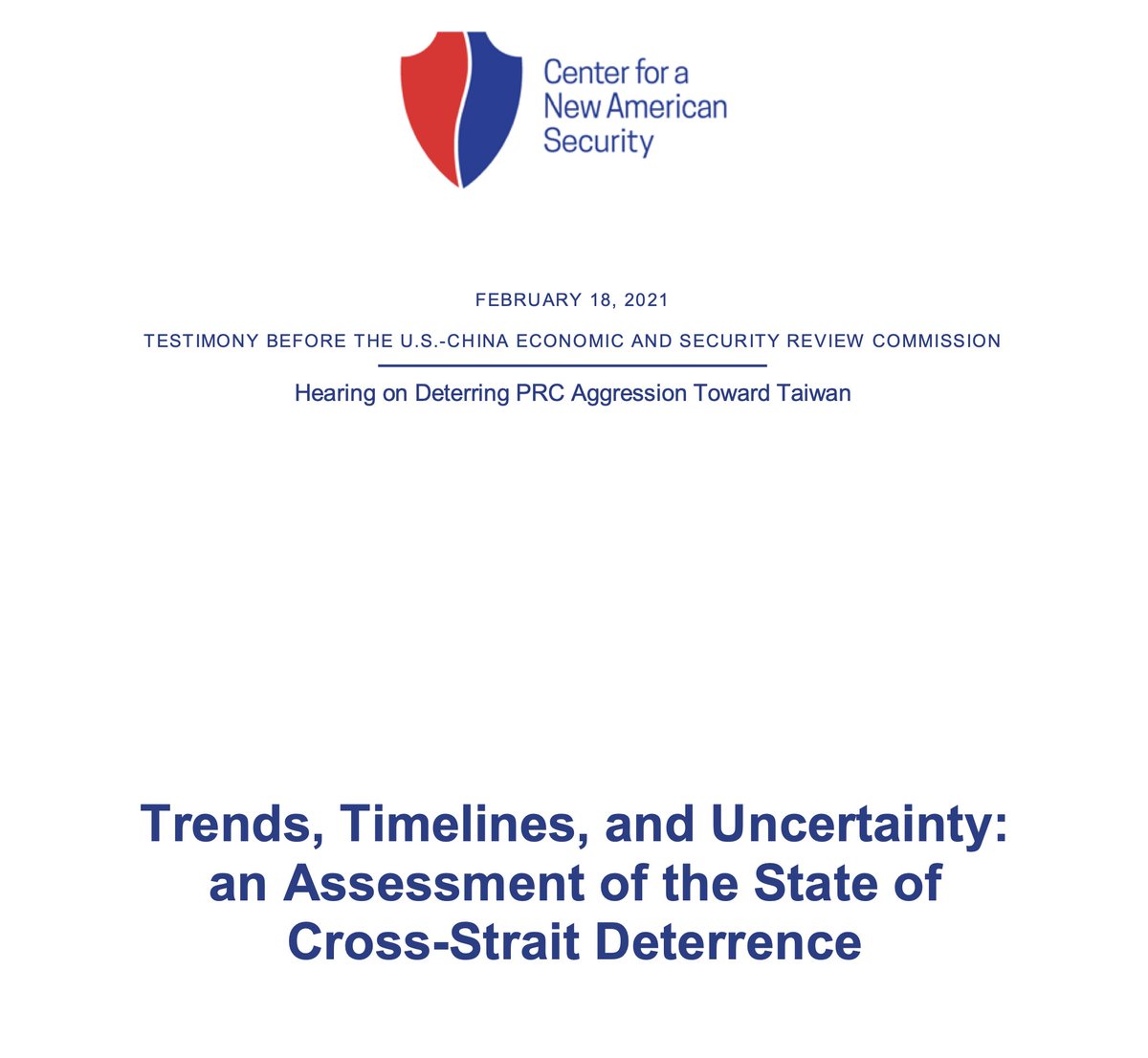
A few thoughts on @FareedZakaria sunny assessment of the US-China military balance, as expressed here and...
https://twitter.com/FareedZakaria/status/1373696826205999107
...in this recent @washingtonpost column on the same topic. washingtonpost.com/opinions/the-p…
In general, Dr. Zakaria's assessment of the balance is limited both in its consideration of the fluid nature of the competition and in its understanding of the China's focused efforts to neutralize the traditional markers of American military power which he cites.
First, he points to the U.S. advantage in the number of nuclear warheads compared to China's. This difference is fairly meaningless in terms of warfighting advantage—or conventional deterrent value—in the case of a regional crisis with China...
...as long as China has an even partially survivable nuclear force. Nuclear brinksmanship takes place on an entirely different plane—largely related to political appetite for risk and a willingness for one's population to endure pain. (Can we guess who might have an edge there?)
Next, he points to the USN's tonnage advantage over the PLA Navy, taking a short-sighted view that only looks at the "right now" and fails to consider the trends in this measure, which are strongly in China's favor. 

As I've discussed in detail elsewhere, from 2015-2019 China outbuilt the U.S. in warships by more than 50%. On these trends, the tonnage gap form which he gains comfort will, as a mathematical certainty, be eliminated over time (I'm guessing 15-20 yrs).
https://twitter.com/tshugart3/status/1306311601968955394
Next, he points to the U.S. advantage in carriers, 11 to 2, but fails to mention that China has its third well along in construction, with associated shipyard expansions underway that indicate dedicated efforts to build more. scmp.com/news/china/mil…
And in a major omission, he fails to mention anywhere perhaps the most notorious & revolutionary arm of the entire PLA—the Rocket Force—and its "carrier killer" ballistic missiles, designed specifically to neutralize the carrier advantage which he touts. scmp.com/news/china/mil…
In a similar vein, he points to the U.S. advantage in modern fighter jets, failing to mention a number of factors that make such a comparison meaningless, such as the fact that the U.S. fighter force is spread throughout the world rather than concentrated in the Pacific...
...and also again that the PLA has built hundreds of precise conventional ballistic missiles with which they are clearly practicing striking U.S. aircraft on the ground, neutralizing the U.S. fighter advantage before the shooting even starts. warontherocks.com/2017/02/has-ch…
He then points to the number of U.S. bases worldwide, when fixed facilities are likely to be more of a liability than an asset, and is seemingly unaware of the move to disperse forces AWAY from such bases, rather than rely on them as an advantage. thedrive.com/the-war-zone/3…
He then points to higher U.S. defense spending, with no effort to account for China's has far lower personnel costs (a mostly-conscript force), its purchasing power advantages, and the fact that it saves development by stealing tech. breakingdefense.com/2018/05/us-def…
But then he explains that this spending advantage doesn't really matter—see U.S. difficulty defeating the Taliban despite outspending it—not recognizing that this is a completely irrelevant comparison (a counter-insurgency campaign vs. competition between industrial powers). 

Next, he makes a comparison between the cost of the F-35 program and China's BRI, and asks which would have brought greater security benefits. This is a false choice, as China itself has the BRI program *and* has been developing stealth aircraft, too—of several types. 

In summary, Dr. Zakaria's comparison of the US and Chinese militaries is overly optimistic—looking at a snapshot instead of trends, using outdated or misleading measures of comparison, and ignoring an entire branch of the Chinese military—and perhaps its most dangerous, at that.
If you'd like to see my take on the military balance in the Indo-Pacific, you can see it here in my recent testimony on this topic to the Senate Foreign Relations Committee.
Fin.
foreign.senate.gov/imo/media/doc/…
Fin.
foreign.senate.gov/imo/media/doc/…
• • •
Missing some Tweet in this thread? You can try to
force a refresh




















